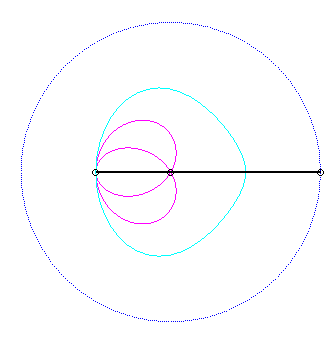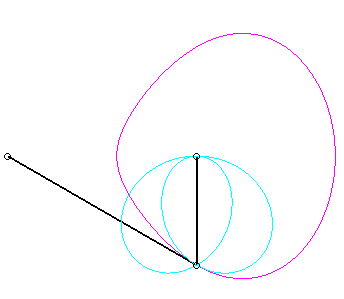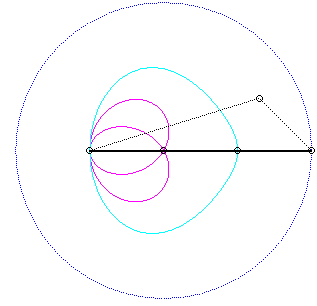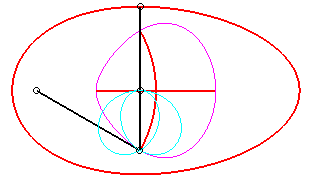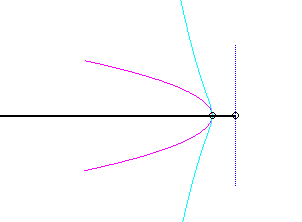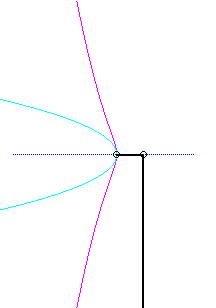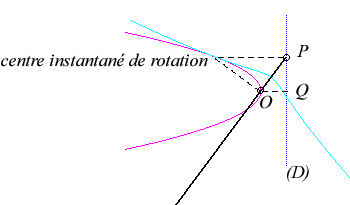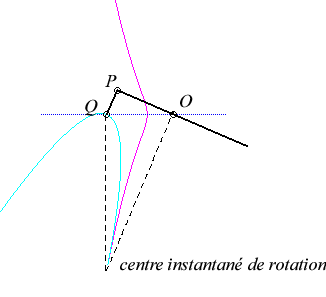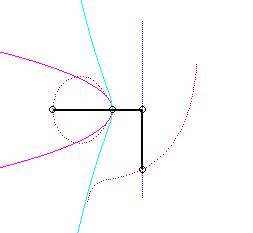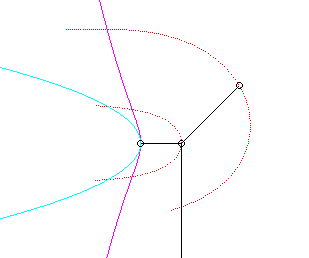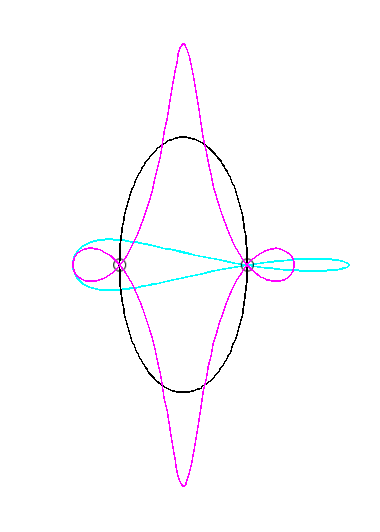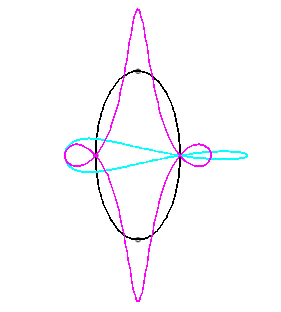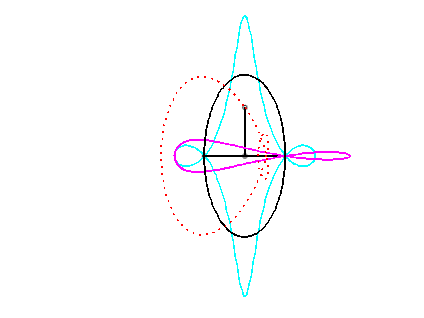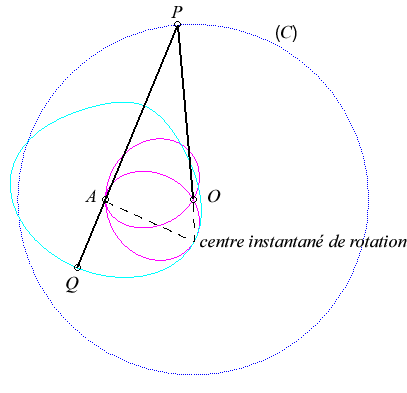 For an observer located on the connecting rod [PQ], the point O has a circular movement around P; the distance AO being constant, for him, the segment [AO] is a connecting rod whose extremity A has a linear movement along [PQ] while the other extremity O has a circular movement carried by the crank [PO]. Therefore, the relative motion of the moving plane with respect to the fixed plane is the one studied in the column on the right, hence the exchange of the bases and the rolling curves.
For an observer located on the connecting rod [PQ], the point O has a circular movement around P; the distance AO being constant, for him, the segment [AO] is a connecting rod whose extremity A has a linear movement along [PQ] while the other extremity O has a circular movement carried by the crank [PO]. Therefore, the relative motion of the moving plane with respect to the fixed plane is the one studied in the column on the right, hence the exchange of the bases and the rolling curves.
Since the velocity vector of A (seen as a point in the moving plane) lies on (PA) and P's one is tangent to (C), the instant centre of rotation M is at the intersection of the perpendicular to (PQ) passing through A and the line (OP).
The base, the locus of M in the fixed plane, is thus, by definition, Jerabek's curve. |
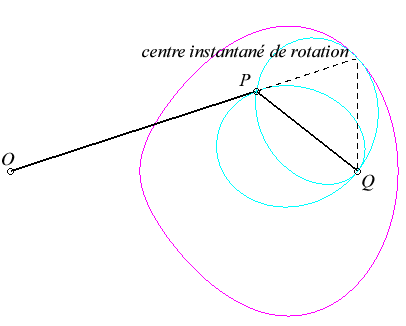
For an observer located on the connecting rod [PQ], the point O has a circular movement around P; for him, the line (OQ) is a connecting rod whose extremity O has a circular movement and that is sliding while passing through the fixed point Q. Therefore, the relative movement of the moving plane with respect to the fixed plane is the one studied in the column on the left, hence the exchange of the bases and the rolling curves.
Since the velocity vector of Q (seen as a point in the moving plane) lies on (OQ) and P's one is perpendicular to [OP], the instant centre of rotation M is at the intersection of the perpendicular to (OQ) passing through Q and the line (OP).
Since the base, the locus of M in the fixed plane, has not, to my knowledge, been given a name, I named it "base of the slider-crank mechanism".
|
